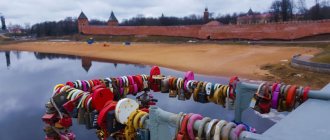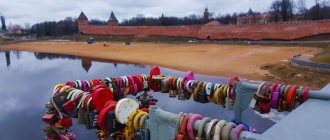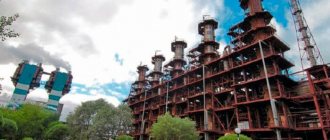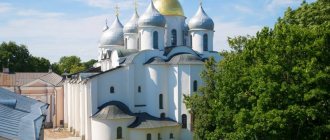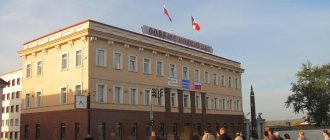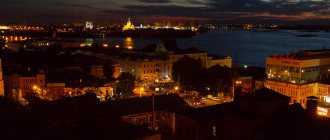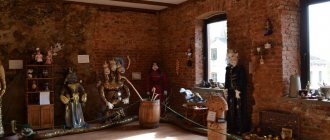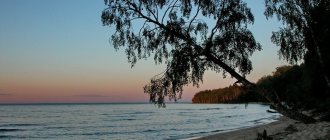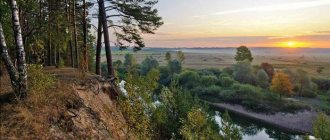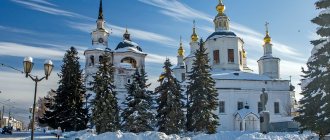In a picturesque place, in the north-west of the country, where the Volkhov River flows and the picturesque Lake Ilmen is located, lies the ancient beautiful city of Veliky Novgorod , which was destined to play a significant role in the formation of the Russian state. Let us, in this regard, take the liberty to dwell in more detail on the ancient history of the city.
History of origin
The first settlers - the Ilmen Slovenes - appeared on the hill between the lake and the river in the 8th century and built a fortress, which in modern times is called Rurik's settlement. The history of the city is connected with Prince Rurik, whom the Novgorodians called to reign in order to stop civil strife, as reported in The Tale of Bygone Years. Rurik’s power extended far; he distributed surrounding lands to their husbands, while he himself ruled in Novgorod.
Urban transport
Veliky Novgorod is a major transport hub. Federal and regional highways pass through it. There is a bypass road that reduces the flow of cars inside the city. In addition to the increased number of personal cars, public transport is also developed in Novgorod: trolleybuses, minibuses and buses operate.
Novgorod is also an important railway junction.
Rurik's Settlement
The settlement under Rurik very soon became a large trade and military center with well-developed administration. His squad and relatives settle on fertile lands. “Overseas guests” come here often and for a long time.
According to the chronicle, the Dowager Princess Olga came to Gorodishche, who wanted to unite Rus' under the banners of the princes of Kievan Rus. Until the end of the 10th century, the Settlement played an important political and commercial role, and life was in full swing here. Later archaeological excavations discovered many treasures of Byzantine and Arab coins, which testified to the vigorous trading activity of the Settlement.
In the middle of the 11th century, construction began on a great temple in the lower reaches of the river. When the Hagia Sophia was built, the palm in the development and history of the city passed to it. From now on, spiritual and political power is concentrated here, and a complex of religious buildings is being built. Life in Gorodishche is becoming sad, there is no former scope, and the new settlement around the cathedral complex is called “Novo-Gorod” - life here is in full swing. It becomes the center of social life for the villagers. The settlement retains the title of a princely and later imperial residence.
"Mr. Veliky Novgorod"
A century later, the Novgorodians defeated the squad of Prince Vsevolod and formed a republic with boyar rule (veche). Princes are invited here no longer as rulers, but as hired bosses. From now on, they no longer have ownership rights to city lands.
For the next 350 years, Novgorod becomes an independent republic - “Mr. Veliky Novgorod”, until at the end of the 15th century the Novgorodians are sworn in to Tsar John of Moscow. After a series of devastating wars with the Moscow principality, Novgorod loses its independence and becomes part of the Russian state.
As part of the Russian state
It was difficult for Novgorod to enter Muscovy: fires, famine, and oprichnina caused a two-thirds decrease in population. The city was plundered and deserted. After troubled times, Novgorod loses its glory and turns into a provincial town. During the time of Peter, it was part of the St. Petersburg province. At the end of the 18th century it gained some independence and became the center of the Novgorod province.
In Soviet times, “hard times” began again in the city - it was annexed to the Leningrad region, and it became a rural outskirts. There was no talk of any industrialization of the city.
The occupation of the city by the Germans lasted more than four years, many monuments were destroyed, and museum collections were looted. After the liberation of Novgorod, it again became a regional center, and a state program for the restoration of monuments was adopted. The revival of the glorious city begins. Its monuments, according to UNESCO, are classified as world heritage. The city is experiencing prosperity in economics, culture, and science. Recognized as the most comfortable city in the Russian Federation
In 2009, now Veliky Novgorod celebrated its 1150th anniversary in the renovated city. And three years later it becomes the center of the celebration of the 1150th anniversary of Russian statehood.
Climate in Novgorod
The weather in Veliky Novgorod is reminiscent of the gloomy and damp St. Petersburg - in a straight line it is about 150 kilometers to the second capital. As in St. Petersburg, at the beginning of summer the white nights begin, where the evening dawn converges with the morning.
In winter there are frequent thaws. In some years, January can be very cold – the recorded temperature is minus 45 degrees. But this is rather an exception.
Summer is moderately warm, with an average “top of summer” temperature of more than 17 degrees, and rainy. Sometimes summer temperatures exceed 30 degrees. But the heat in the city is easily tolerated - there is a lot of greenery and places for swimming. There is a well-maintained sandy beach near the St. Sophia Cathedral.
The city receives up to 550 millimeters of precipitation annually. The rainiest months are July and August, with over 70 mm of precipitation. In August and September there are early frosts, when the temperature passes through zero degrees.
The city is located among lakes and rivers, and this makes the air quite humid. Average values: within 85 percent.
The temperate continental climate of the city on Volkhov does not provide residents with comfortable weather throughout the year; there are often cyclones with sharp changes in daytime temperatures.
Life in Veliky Novgorod - reviews from those who moved
I’ve been living in Novgorod for 8 years, I came from the region to study. At first it seemed huge; I took the bus to the wrong place several times and didn’t immediately remember the streets. Now I know the city like the back of my hand, I know almost all the streets. I know many people, I walk down the street and constantly meet acquaintances) Novgorod is a small town with a long history, which is more suitable for retirees. It’s a quiet, calm city, I walk short distances or take a taxi - it’s very affordable, about 100 rubles. for traveling half of the city. There is no entertainment for young people, 1 decent shopping center was recently opened, 1 drama theater, several cultural centers for visiting artists, 1 philharmonic society. The roads are bad, the Kolmovsky Bridge is simply full of huge holes (someone always runs into a wheel and ruins it), the pedestrian zone has holes (you can see the river through the reinforcement), the city is dirty - in the rain and off-season there is slurry of sand and earth on the sidewalks, in winter they rarely clean snow and ice is rarely sprinkled, often you just walk on bare ice the entire street. There are very few trash cans; there are many houses with large garbage dumps where garbage is scattered and not collected. Flowers and lawns are not planted, only in the city center near the Kremlin and the administration the flower beds have been a little tidied up and flower beds have been decorated. Public transport is in very poor condition, I prefer to ride there only standing - everything is dirty, including the seats. All equipment is purchased used from St. Petersburg or Moscow. The fare is expensive - 27 rubles, I rarely travel, the prices for travel cards have risen to the skies. Plus general transport - buses and trolleybuses travel quite often and there are many routes. The salaries are funny, people are ready to work hard for 7-10 thousand, 15 thousand is already good, but those who receive 25-30 thousand are already rich) The job is bad, it’s easy to get a job as a salesperson. Real estate prices are low - one-room apartment 1 million, two-room apartment Khrushchev 1.5 million, in a new building there is a 2-room socket. sq. 2.2 with finishing, for 3-5 million you can buy luxury housing. Rent - 7-10 thousand one-room apartment, 14-20 thousand two-room apartment, room 4-6 thousand. Food prices - milk 26 rubles, good bread 52 rubles and half sliced in the store 23 rubles, pasta 30 rubles, sugar 40 rubles, sliced loaf 23 rubles, chicken fillet 200+-, prices are high.. NovGu does not have a good level of education, I know this from my own experience and many of my classmates studied there, so I don’t want to go to my classmate who is a doctor for treatment)))) Although the teachers bullied us well (agricultural), we sat from 9 to 17, listened to lectures and wrote. They don’t teach correspondence courses at all, just go to lectures for show (an hour a day), the session ends a week before, exams are set automatically. They give out a dorm without any problems (full-time) and it cost 200 rubles per month, the scholarship was 3 thousand, but now I heard that 10 thousand were made. People... angry, gloomy and always dissatisfied, go to the group PE53 and read, there is one in the comments negative, the authors are thrown mud at them just like that. We sometimes go to St. Petersburg and I am immediately struck by the politeness of the people. The Novgorod region is in 1st place in oncology, next to the city of chemicals. Akron plant, in the city of Deka (beer, kvass) and Dirol (chewing gum). I really like the climate, lately there have rarely been severe frosts in winter, in summer there has rarely been heat, now throughout July the temperature is approximately 15-20 degrees, now at night it has dropped to 13 degrees. In June it was up to 30 degrees, and in August it is usually hot too. In general, I’m bored with the city, although I love it, I consider it my homeland, but I feel that I need to move on on my life’s path) My husband and I are considering moving to St. Petersburg, while we’re thinking about it.
Ecology in Novgorod
The environmental situation in the city does not cause any particular concern among the townspeople. The air here is considered clean, thanks to parks and green spaces on the streets. True, monitoring organizations record river water pollution within the city from year to year.
A potential source of danger - chemical is located outside the city limits and does not have a negative effect on the air.
City authorities see a danger to the environment in the absence of facilities for recycling lamps containing mercury and in the maintenance of a solid waste landfill on Luzhskoe Highway, 17 kilometers from the city.
Since 2005, the city has been implementing a target program “Ecology of Veliky Novgorod”, designed to solve urban problems. In 2014, as part of the program, the “Clean Coast” campaign was held and the second stage of a landfill with separate disposal of waste of a high hazard class began operating.
The implementation of the program has a good effect: the only source of air pollution is transport.
Measurements of maximum permissible concentrations of harmful substances are carried out regularly at three environmental posts.
Ecology of Veliky Novgorod
Air pollution in the city is considered low. The greatest contribution to it comes from car exhaust gases. The role of industry is gradually decreasing.
At the same time, the water in the Volkhov River is characterized as polluted. The main pollutants are: iron, manganese, copper, organic substances. The radioactive background is normal.
A problem for the ecology of the city and its surroundings is the large number of discarded mercury lamps, as well as solid waste dumps.
Veliky Novgorod is distinguished by a large amount of greenery, which has a softening effect on the microclimate. Vegetation also reduces the concentration of harmful pollutants in urban air.
Population of the regional center
Veliky Novgorod is a small city with a population of less than 300 thousand people. By the beginning of 1960 there were only 60 thousand people there. During industrialization, a sharp increase in the urban population began, which stopped during perestroika. In the regional center, there is a tendency towards a decrease in Novgorod residents - most of the working-age population leaves to work in Moscow and St. Petersburg. As of January 1, 2014, a little more than 220 thousand people lived in the city, every third resident of the region. The share of the working-age population is 58 percent of the population (2012 data). The unemployment rate was 1.1 percent at the beginning of 2015.
The most popular specialties in the labor market:
- Doctors
- Nurses
- Installers
- Engineers
- Drivers
- Loaders
- Seamstress
- Cooks
Novgorodians are surprisingly hospitable people. Perhaps this is explained by the fact that thousands of tourists visit the city every year to admire its ancient beauty and visit parks and beaches. Sailing regattas, international competitions and scientific conferences are held here.
Peter is very contrasting
To be fair, it should be noted that it is not always dark here, but only for six months. After the polar night, very slowly, throughout the spring, the polar day comes. In the summer in St. Petersburg, the sun shines even at night (well, you know, those famous white nights). The rainiest period of the year comes closer to autumn, and in the summer in St. Petersburg it is remarkably beautiful: everything is flooded with dazzling white sunlight, penetrating through the slits of thick foliage and drawing lace on the ground... And in the evenings the nightingales sing!
Russian Museum
However, there is also one problem here - the sunlight is really super-dazzling. I, like many locals, cannot do without sunglasses in the St. Petersburg summer, and again, the low position of the sun is to blame for this. It always shines directly into your eyes, creating haze and making it difficult to see. In addition, the contrast between light and shadow is simply amazing: very light in the sun and deep blacks in the shadows. St. Petersburg is the most contrasting city I have ever seen. It's beautiful, but very tiring for the eyes.
Industrial enterprises
Enterprises of the regional center have demonstrated positive dynamics for a number of years. More than 60 percent of the region's entire industry is concentrated here. According to its structure, the enterprise belongs to:
- Processing industry
- Energy production
- Chemical industry
- Food industry
- Mining
- Electronic equipment manufacturing
- Woodworking
The largest enterprise is the Acron mineral fertilizer plant, part of the holding of the same name. Known since Soviet times as a leader in the chemical industry. Fertilizer production accounts for about 40 percent of the city's gross product. The enterprise occupies an area of 600 hectares and employs about 2 thousand people. The average salary exceeds the city indicator - more than 35 thousand rubles. Excellent conditions for work and recreation, sports, and treatment of workers have been created here.
The company has its own sports center with a swimming pool and playgrounds. There is the Akron Palace of Culture, where interesting events take place. If you manage to get a job at a factory, consider yourself and your household very lucky.
Standard of living and finances
The average salary is higher than in the regional centers of the Central Federal District. It is about 30 thousand rubles. This level has been exceeded in modern industrial enterprises:
- JSC Acron - production of mineral fertilizers
- CJSC "Novgorod Metallurgical Plant" - processing of scrap metal, production of copper wire
- LLC "Dirol-Cadbury" - production of chewing gum
- Distillery
It is noteworthy that almost all large enterprises in the city have vacant jobs.
The revenue side of the budget for 2014 is 4.6 billion rubles, but the expenditure side is 300 million more. During the year, the expenditure portion of the treasury exceeds the 10 percent allowed by the budget code, and we have to resort to large loans, increasing the public debt.
Winter is also dark
The second problem will probably be worse than the first. The lack of heat in winter is, in principle, normal for the Russian climate, with the exception of the very southern regions. It is much harder to bear the absence of light.
View of Birzhevoy Bridge and the Spit of Vasilyevsky Island
North is north - in winter we have almost polar night. Even in summer the sun does not rise higher than a five-story building, and in winter it is so lazy to rise: already at 14:00 it begins to noticeably get dark.
In addition, cloudiness in winter is much higher than in summer. The sky is covered with such a dense layer of clouds that even those frail rays that could make their way to people do not reach the ground. In November, the city hides under a gray cloud blanket and it seems that the sky literally lies on the asphalt. The dark gray landscape sets in for a long 5-6 months and everything seems to fall into a sleep. For example, for the entire December of last year in St. Petersburg there were no more than 90 hours of sunshine. This is a little more than four days...
New buildings and neighborhoods
There is no administrative division into districts in the city - it is believed that the city is too small for this. Local residents are accustomed to identifying “independent” areas and names in the city.
On the northern outskirts of the city there are two villages with a population of about 7 thousand people - Krechivitsy and Trubichino. Remote from the center - a trip by public transport will take up to 40 minutes. A promising area for development, there are many old private sector houses at very ridiculous prices - from 400 thousand rubles, however, you will have to invest the same amount in renovating the house. The consolation prize is a large plot of land. The cost of an apartment here is also not high: a two-room apartment in good repair can be purchased for 1.4 million rubles, less than 30 thousand rubles per square meter.
Of the minuses: there is no school in the village of Trubichino; the children get to the neighboring microdistrict by school bus.
Closer to the city is the village of Syrkovo - a working outskirts with chaotic buildings. Here you can buy a house for 400 thousand rubles or a five-story mansion for 12 million. There is a school in the village, but getting here from the city center is difficult: there is only one public transport route, and even that runs once every two hours. The area is suitable for new residents who have their own car.
The downside is that the local population is not very hospitable and is wary of “outsiders.”
The village of Pankovka with a population of up to 7 thousand people can amaze those who come here for the first time with its contrasts. On one side of the road there are private wooden houses, on the contrary - high-rise buildings. Housing here is one of the cheapest in the city: a one-room apartment can be purchased for a million rubles, a private house for 300 thousand.
Ideal for those who have their own car (20 minutes from the center) and like to tinker with garden beds.
The area of Shchusev Street is the most criminal in the city. There is no new construction here, so it is problematic to buy an apartment. Only rooms starting from 400 thousand rubles are put up for sale.
The Grigorovo microdistrict is a residential area that includes a cottage community. The houses here are relatively new - 15 - 20 years old. Prices are lower than in the city center. A one-room apartment can be purchased for 1.4 million rubles. It has good transport links to all areas of the city and developed infrastructure.
Many apartments are for sale in the western part of the city, which is located within walking distance to the center - 20 minutes on foot. Prices for a one-room apartment start at 1.8 million rubles.
In the central part of the city there are low-rise buildings - houses no higher than 5 floors. The cost of apartments starts from 2 million rubles. In the park area, real estate is more expensive - from 2.5 million rubles.
The station area is located a 10-minute walk from the center and boasts a large selection of varied accommodation. In new buildings, prices start from 50 thousand rubles per square meter.
The prices are the same in the shopping part of the city, where almost half of Novgorod residents live. You can purchase either a room in a communal apartment or a spacious apartment in new buildings. Prices range from 45 to 5 thousand rubles per square meter. In luxury housing, the cost of a meter can reach up to 70 thousand.
The White City area is the center of urban new buildings, consisting of white houses with red tiled roofs. A very cozy place to live: developed infrastructure, excellent transport accessibility - you can get to the center in 10 - 15 minutes. There are no traffic jams in the city. In low-rise buildings, the cost per square meter does not exceed 45 thousand rubles, in cottage buildings - from 50 thousand. Real estate in this part of the city is in high demand, so prices are constantly rising.
In general, little housing is being built in Veliky Novgorod - just over 0.5 square meters per citizen. There is a shortage of economy class housing and one-room apartments.
Sights and famous people of the city
Unlike new housing, there are plenty of attractions in the city - not a single Russian city has preserved so many ancient monuments. More than 50 monuments of ancient Russian architecture have become part of the modern city.
Start your acquaintance with the city with the ancient Kremlin (Detinets) and its towers. Climb the Kokuy Tower, where the observation deck is located, and you will immediately see the architecture of the city, the picturesque surface of Lake Ilmen, and see a clear division of the city on both banks of the river. Next to the ancient Kremlin there is a beautiful park with entertainment, tennis courts, and a concert venue.
The dominant architectural feature and symbol of the city is the St. Sophia Cathedral with a complex of church buildings on the banks of the Volkhov. It was founded by Yaroslav the Wise in the image and likeness of the Kyiv Cathedral. It was also built by Kyiv craftsmen.
Next to the cathedral is the “Millennium of Russia” monument, built in 1862, which will tell you about the heroic pages of history.
Among the outstanding people of the Novgorod land:
- Writers and historians
- Scientists and travelers
- Composers and artists
- Heroes of the Soviet Union
These are dozens, hundreds of famous people who glorified their region. It cannot be otherwise: the city’s rich history, talented people.
Culture and education in Novgorod
Few Russian cities can boast that the bulk of their residents are people with higher and secondary education. Veliky Novgorod is one of this number. We have already talked about the hospitality of Novgorodians: they will willingly show you the way, talkatively introduce you to the sights, and advise you to visit theaters and concert venues:
- The Academic Drama Theater named after Fyodor Dostoevsky has already celebrated its 160th anniversary. His repertoire includes performances based on the works of the great Fyodor Dostoevsky. For the first time in Russia, the acting troupe staged a play based on the novel by Alexander Herzen “Who is to Blame?”
- Theater for children and youth "Maly" - a unique experimental platform for talented youth
- The Roger Puppet Theater organizes fabulous trips to the ancient world of Novgorod, into the goodness of fairy tales. Children themselves become participants in the performances.
- The Philharmonic holds the festivals “Christmas Gifts” and “Celebration of Slavic Literature and Culture.” Here the local chamber orchestra and folk orchestra perform to a storm of applause.
- Museum of Fine Arts - building of the Noble Assembly. The richest collections of paintings from different centuries have been collected.
- The State Museum-Reserve is located on the territory of the Kremlin. There is a unique collection of icon paintings here, second only to the collections of the Tretyakov Gallery.
There are many branches of higher educational institutions of St. Petersburg in the city; there are secondary specialized institutions that train specialists to work at large local enterprises. Students have the opportunity to receive scholarships from enterprises, and upon graduation, acquire a decent job.
Veliky Novgorod is a small and very comfortable town to live in. The main microdistricts are located within walking distance from the historical center of the city. You can fully relax and swim in the summer without leaving the regional center. And the wonderful history of the ancient region will give you many pleasant hours of new discoveries and immersion in the origins of Russian statehood.
Always chilly
It’s chilly here all year round, at any temperature, and inside buildings too. You cannot walk without a T-shirt: you always need to wear underwear under your clothes, otherwise you will freeze.
You may even be hot, but still chilly. It’s hard to imagine this, but it’s always like this here. It’s impossible to get used to this (at least I haven’t succeeded yet). At home you need a warm robe, or better yet two or three (I have four), because you will be cold. It's not the cold that will kill you, it's the humidity. You will shiver slightly from the cold and sweat.
